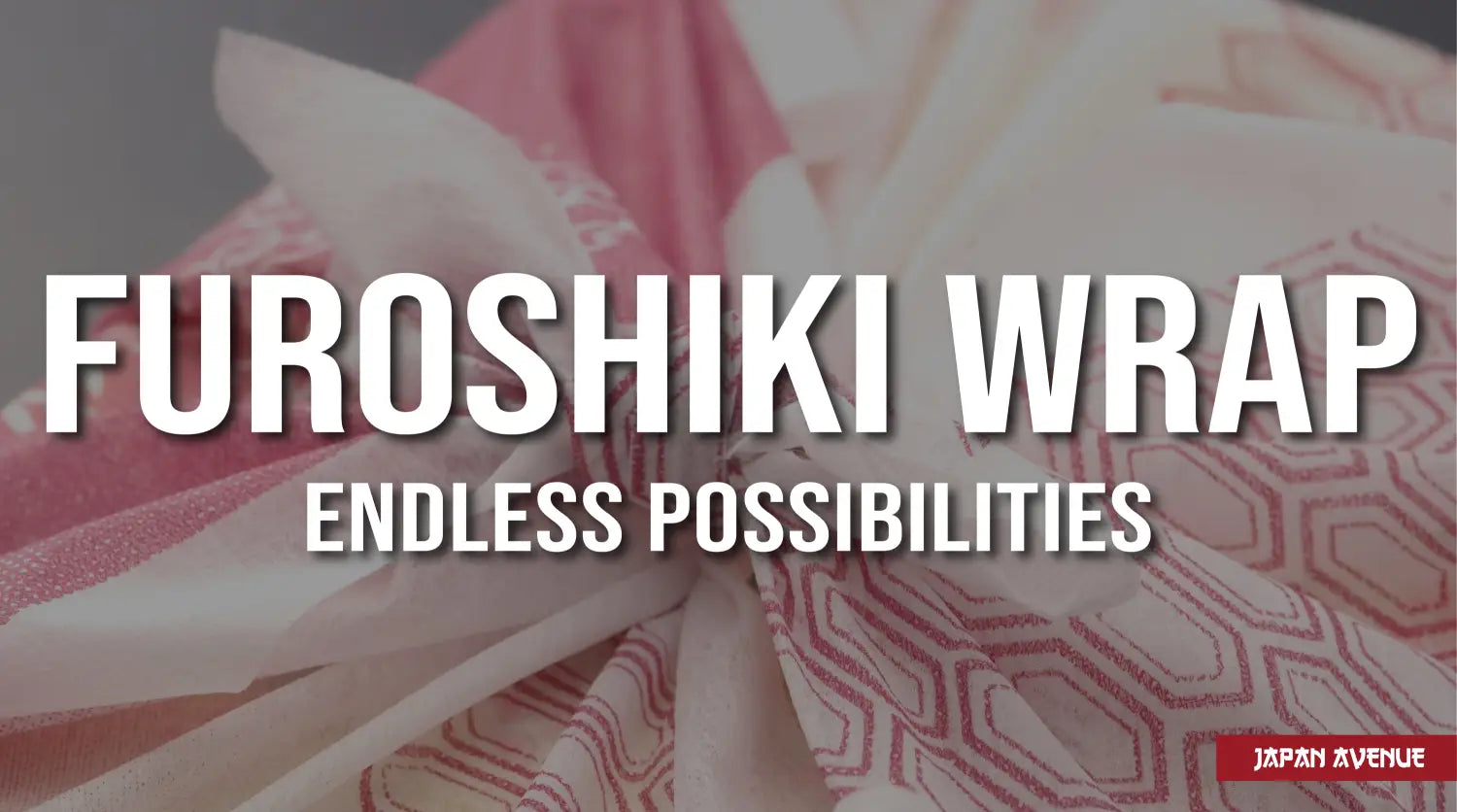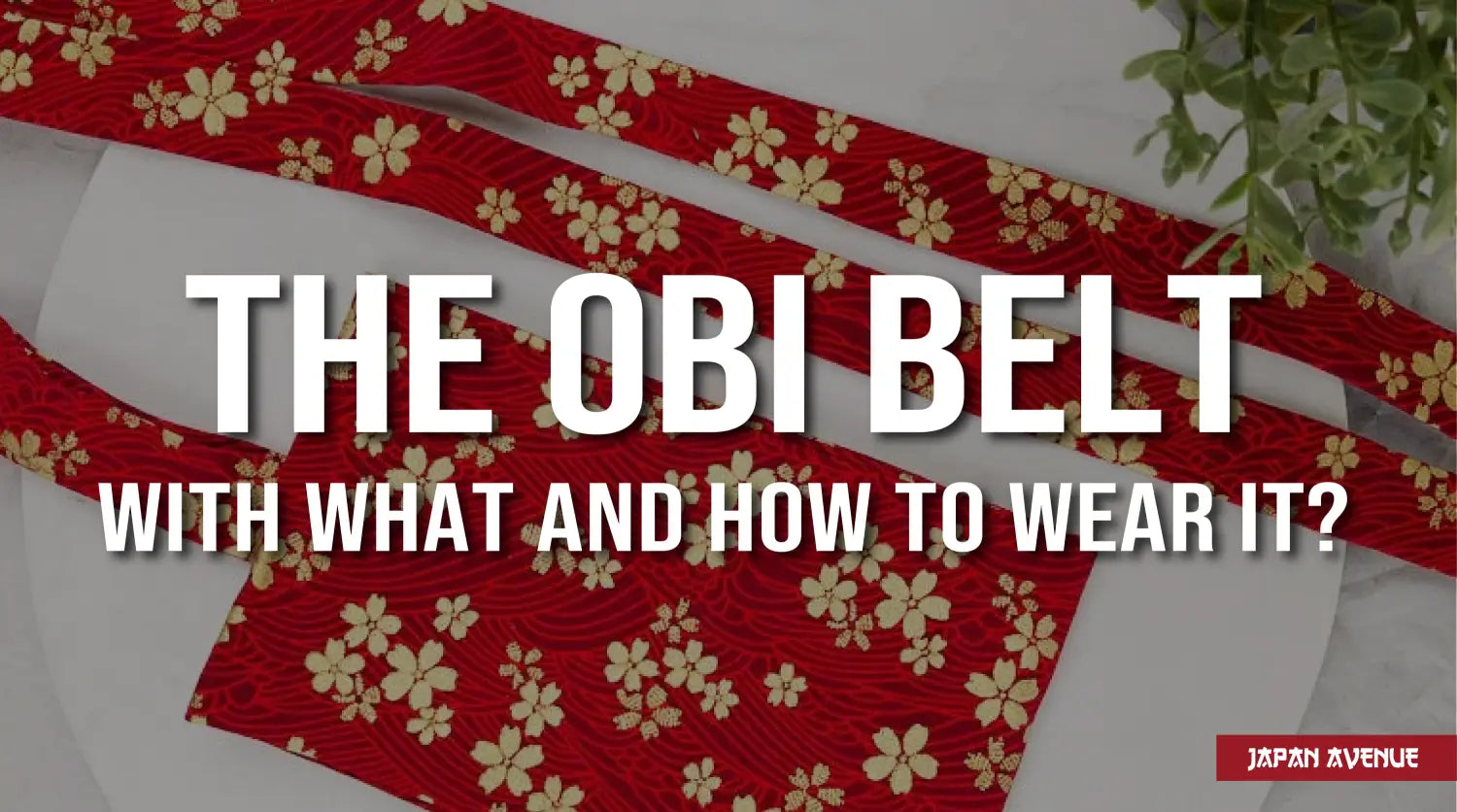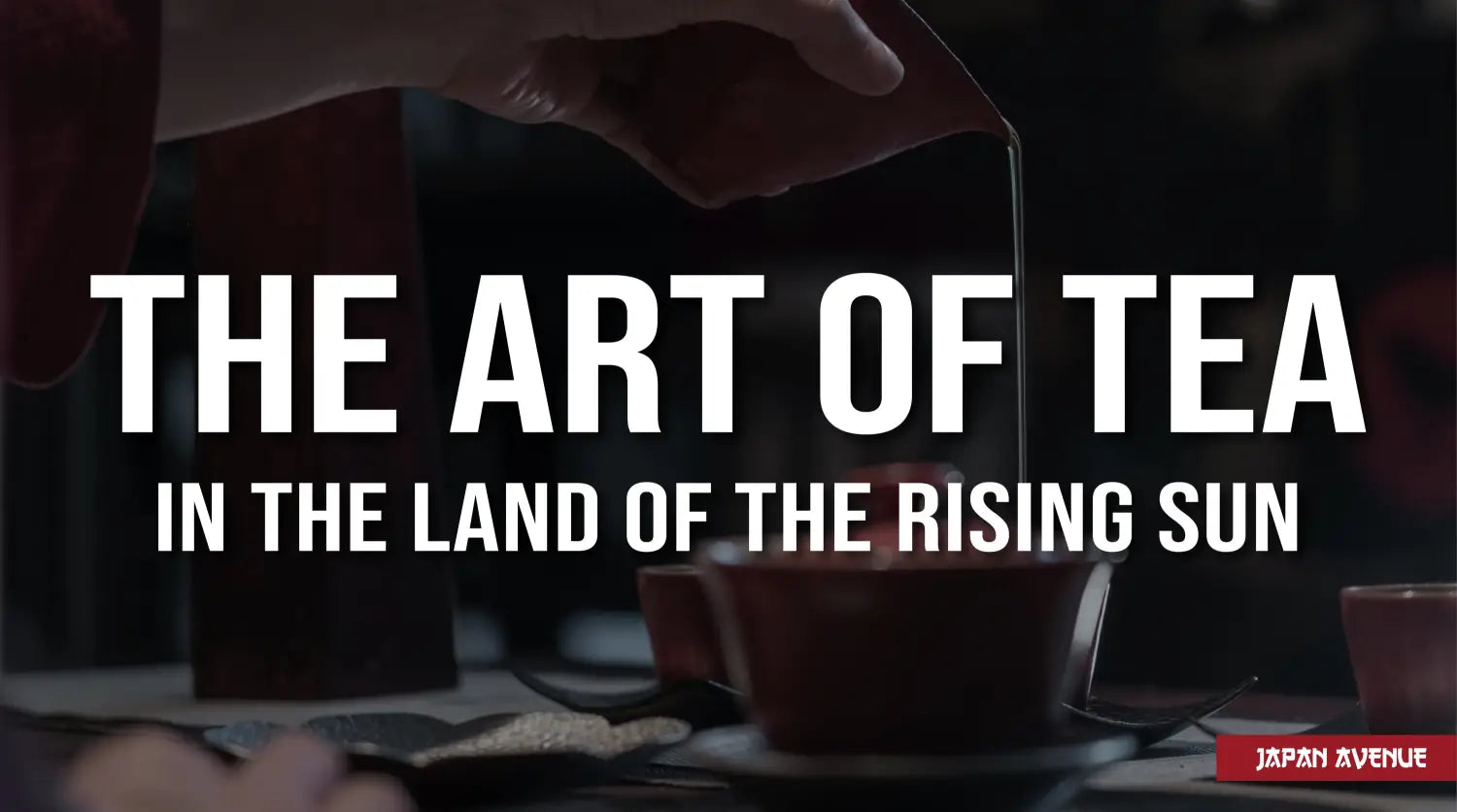Looks like a simple square of fabric and yet it is far more than that!
So, what is furoshiki? In addition to being the first eco-friendly bag in the world, this multifaceted item makes a chic and environmentally friendly gift wrap. Furoshiki is a traditional Japanese art form that reduces waste. This folding technique is an ingenious and zero waste way to pack and carry your belongings.
Learn more about this pretty piece of fabric that carries traditions.
🙏 The art of folding and tying a cloth

Furoshiki is an ancestral Japanese technique of folding fabrics to wrap objects as origami and to facilitate transportation. Its name refers to the method used as well as to the square of fabric itself. Furoshiki allows you to carry your bento or belongings and to make beautiful, eco-friendly gift wraps.
🧧 The different types of furoshiki
Originally, furoshiki was rectangular, but today it takes on a square format from 45 to 230 cm wide. This piece of fabric is made of natural fibers such as cotton or silk and sometimes artificial ones such as viscose or nylon. Durable and washable textiles are chosen for creating bags or bundles, while silk furoshiki is perfect for gift wrapping. There are also different sizes of fabrics, depending on the purpose for which they are intended. The smallest models can contain an envelope with a wedding gift, for example. As for the larger pieces, they can carry imposing objects such as futons and quilts.
🎀 The basic knots
The Mamusubi is the basic knot which consists of a loop on a single strand. Hitotsumusubi is the classic double knot with two strands. This knotting technique is used for most of the furoshiki. It allows the fabric to be tied securely while providing a handle for carrying. Simply make a knot by positioning the right strand behind the left, then a second loop by ironing it in.
🗺️ Folding techniques
The Japanese invented various foldings adapted to the different shapes of objects to carry or to offer. For a bottle we will realize a furoshiki Bin Tsutsumi or Bin-zutsumi while for a bento box we will use the Otsukai Tsutsumi. The Hira Tsutsumi is a wrapping without knots which allows to wrap flat items. The Yotsu Musubi is perfect to wrap a square object with 4 knots. For a round package, or to carry watermelons, we use the Suika Tsutsumi. The Entou Tsutsumi is reserved for cylindrical shapes while the Hon Tsutsumi is used to wrap two books by forming a handle. Lastly, if the object has an atypical shape, a Katakake Fukuro furoshiki can be created which is suitable for all kinds of configurations.
🐰 Plant and animal patterns
There are many models of furoshiki cloth. If the dimensions and fabrics correspond to the different uses, the symbolism of the colors and patterns is also very important in the Japanese culture. These are chosen according to the occasion, the season and the recipient of the gift.
A sky blue, light green, red, or gold fabric celebrates a happy event while dark colors evoke mourning. The purple fabric, a sign of long life, is suitable for all situations. In spring, furoshiki is adorned with cherry blossom patterns while in autumn, we see a lot of maple leaves.
The plum blossom, bamboo and waves are auspicious symbols. Similarly, the karakusa pattern combined with the color green invites happiness and prosperity. Chrysanthemums are a symbol of longevity and perfection, while peonies evoke honor and courage. It is also common to see furoshiki with lucky animals such as cranes, turtles and shells for Japanese weddings. The rabbit is also an animal that brings good luck especially if it is associated with autumn plants and the full moon.
🎎 An ancestral Japanese tradition

Source: zusetsu.com " Picture Book of Kyouka Poems: Mountains Upon Mountains (1804) ".
Furoshiki would have appeared in the Nara period, in the 8th century under the name of "tsutsumi" which means "packaging". At that time, its role was to protect precious objects such as the imperial treasure. Later, the fabric was used to wrap clothes and was called "koromozutsumi" before referring to a "flat package" or hirazutsumi.
The name "furoshiki"(風呂敷) was only used from the 14th century. "Furo" being translatable as "bath" and "shiki" as "floor". At that time, samurai and aristocrats used it to carry their spare clothes to the public baths. They also used it as a bath mat for getting dressed.
During the Edo era, merchants used it to carry and sign their goods. Furoshiki became popular and everyone started using it. Unfortunately, after World War II and the advent of plastic bags, the ancient art of furoshiki fell into disuse. Today, cloth wrapping is coming back into fashion and furoshiki has become the emblem of the mottainai, a Japanese environmental movement.
🌿 An original and zero waste gift wrap

A benefit of the furoshiki is that it is reusable. A zero waste packaging that easily replaces the classic gift paper, while reducing the carbon footprint. The furoshiki is a much more elegant, original and responsible way to give. No more paper waste!
👉 3 good reasons to adopt the furoshiki
The advantage of furoshiki lies both in its ecological concept and in its practicality. This piece of fabric with multiple uses offers endless variations !
🟢 An ecological alternative to gift wrapping paper
Everyone knows that gift wrap always ends up in the trash. Yet, the ecological impact is there, even with recycled paper. Cutting down trees, water, energy, pollution... Therefore, in a climate context such as today, environmentalists are looking for sustainable solutions that are less harmful to the planet. The washable and reusable furoshiki is part of it. Quite often, we simply need to tap into old traditions to find more environmentally friendly solutions.
🟢 Endless possibilities with a single piece of fabric
You can't imagine all the features of the furoshiki. In addition to being a pretty gift wrap, the furoshiki makes an ideal shopping or market bag. Very lightweight, you can carry it in your handbag to take it out when you go shopping. Much more aesthetic and less bulky, the furoshiki can also be used as a backpack to carry your belongings, your lunch or your picnic. If you are going on a trip, this fabric piece can be used as a toiletry bag. It also allows you to better organize your suitcase, by separating your clothes. Besides its practical aspect, this cloth is perfect to decorate your home with its Japanese landscapes and traditional patterns. Finally, the furoshiki worn around the neck has become a true fashion statement.
🟢 An original way to give and to please
In Japan, gift wrapping is as important as the gift itself. That's why gift packages are always very neat and covered with symbols. Giving a present in a furoshiki shows a special attention. The one who receives the gift will be able to use the furoshiki to make a new gift, thus participating in the conservation of this beautiful Japanese tradition... as well as of our planet!

Source: zusetsu.com
Furoshiki is a sustainable packaging technique that will revolutionize your daily life while carrying a vital message: that of an environmental approach. So, you can also replace your usual paper packaging with a beautiful furoshiki!





